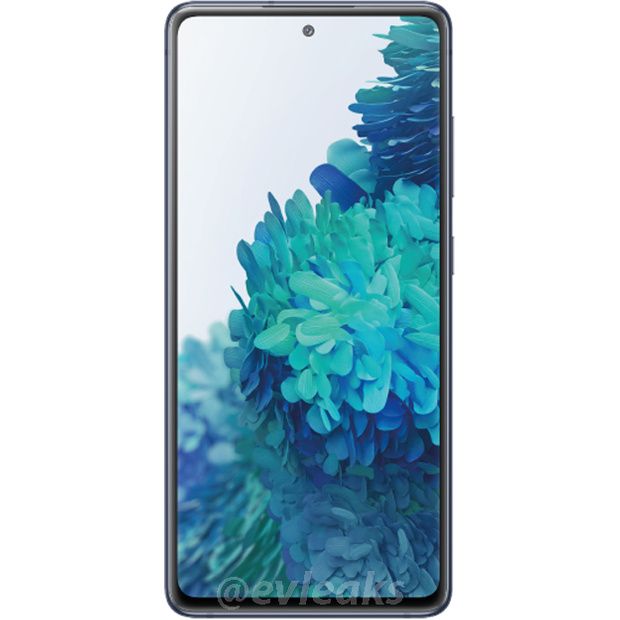The Samsung Galaxy S20, S20+, and S20 Ultra launched earlier this year right before COVID-19 shut everything down, and Samsung is about to follow-up with the new Galaxy Note 20 and Galaxy Note 20 Ultra in just 2 days from now. A few weeks before the big Galaxy S20 announcement in February, Samsung launched the Galaxy S10 Lite and the Galaxy Note10 Lite, two devices that were oddities in Samsung’s typical launch cycle. The S10 Lite and Note 10 Lite were both more affordable versions of their flagship counterparts, and it seems that Samsung may be set to repeat this strategy with the Galaxy S20. Thanks to renowned leaker Evan Blass, we now have our first look at the Galaxy S20 “Fan Edition”.

Credits: Evan Blass.
Samsung has previously used the Fan Edition (or FE) moniker with the Galaxy Note FE, a re-release of the disastrous Galaxy Note7 but with a fixed battery. This time, though, the Galaxy S20 wasn’t an exploding disaster that got recalled twice, so as you might guess, this is a different situation. The render that was posted on Evan Blass’s Patreon shows the Galaxy S20 Fan Edition looks pretty similar to Samsung’s vanilla Galaxy S20, with the same wallpaper and a centered hole-punch cutout for the front-facing camera. But the display is completely flat this time around, and the bezels are noticeably bigger than those on the flagship Galaxy S20.
We previously heard of a Galaxy S20 Fan Edition back in June thanks to a report from SamMobile. The publication reported that Samsung is developing a Galaxy S20 variant with model number SM-G780 (for global markets) and SM-G781 (for U.S. markets). The global model will apparently be available with and without 5G while the U.S. model will only be available in a 5G model. SamMobile did not share detailed specifications of the device but believes it should offer at least 128GB of internal storage and Android 10 on board with One UI 2.5. Notable Samsung leaker Ice Universe believes the device will have a 120Hz refresh rate display like the rest of the Galaxy S20 lineup, the same Qualcomm Snapdragon 865 processor, an IP68 dust and water resistance certification, and a small hole-punch cutout measuring 3.3mm in diameter. Korean publication The Elec reported that the Galaxy S20 Fan Edition will have a triple camera configuration consisting of a 12MP wide-angle (Ice Universe reports it’s the Sony IMX555), 12MP ultra wide-angle, and 8MP telephoto camera with 3X optical zoom; they also report the device will have a 32MP selfie camera, a screen size between 6.5-6.7 inches, and a price at about 900,000 won (~$753) when it goes on sale in October. Finally, GalaxyClub reports that the phone’s battery capacity will be 4,500mAh and the color variants will be green, orange, red, and white in Europe.
The post This is our first look at the Samsung Galaxy S20 “Fan Edition” appeared first on xda-developers.
from xda-developers https://ift.tt/2XlWep8
via IFTTT


